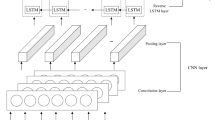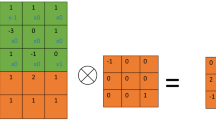Abstract
Accurate load forecasting can provide important information support for intelligent operation of power systems, it can assist the power grid to deploy production plans in advance to uphold the equilibrium between the supply and demand for electrical power, or plan investment strategies based on the results of the forecast. Nonlinear Spiking Neural P (NSNP) system [1] belongs to a category of computational systems with distributed, parallel, and non-deterministic characteristics that have the analytical skill to solve nonlinear problems. Aiming at the temporal characteristics and complex nonlinear characteristics of electrical load data, this paper proposes a new Medium-Long-Term Load Forecast model LF-ASNP based on NSNP system and attention mechanism, which can accurately analyze the characteristics of historical load data and forecast the electrical load. In this paper, the LF-ASNP model is validated in several benchmark datasets, and the analysis of the experimental results fully demonstrates that the model can forecast the power load effectively and reliably.











Similar content being viewed by others
Data Availability
The data employed in the experiments are provided within this article.
References
Peng, H., Lv, Z., Li, B., Luo, X., Wang, J., Song, X., Wang, T., Pérez-Jiménez, M. J., & Riscos-Núñez, A. (2020). Nonlinear spiking neural p systems. International Journal of Neural Systems, 30(10), 2050008.
Azeem, A., Ismail, I., Jameel, S. M., & Harindran, V. R. (2021). Electrical load forecasting models for different generation modalities: A review. IEEE Access, 9, 142239–142263.
Dagdougui, H., Bagheri, F., Le, H., & Dessaint, L. (2019). Neural network model for short-term and very-short-term load forecasting in district buildings. Energy and Buildings, 203, 109408.
Zhang, W., Chen, Q., Yan, J., Zhang, S., & Xu, J. (2021). A novel asynchronous deep reinforcement learning model with adaptive early forecasting method and reward incentive mechanism for short-term load forecasting. Energy, 236, 121492.
Tamura, Y., Zhang, D., Umeda, N., & Sakashita, K. (1992). Load forecasting using grey dynamic model. Journal of Grey System 4(1).
Olabode, O., Amole, O., Ajewole, T., & Okakwu, I. (2020). Medium-term load forecasting in a nigerian electricity distribution region using regression analysis techniques. In 2020 International Conference in Mathematics, Computer Engineering and Computer Science (ICMCECS), (pp. 1–5).
AlRashidi, M., & El-Naggar, K. (2010). Long term electric load forecasting based on particle swarm optimization. Applied Energy, 87(1), 320–326.
Oliveira, E. M., & Oliveira, F. L. C. (2018). Forecasting mid-long term electric energy consumption through bagging arima and exponential smoothing methods. Energy, 144, 776–788.
Kim, D.-H., Lee, E.-K., & Qureshi, N. B. S. (2020). Peak-load forecasting for small industries: A machine learning approach. Sustainability, 12(16), 6539.
Tang, L., Wang, X., Wang, X., Shao, C., Liu, S., & Tian, S. (2019). Long-term electricity consumption forecasting based on expert prediction and fuzzy bayesian theory. Energy, 167, 1144–1154.
Ju-Long, D. (1982). Control problems of grey systems. Systems & Control Letters, 1(5), 288–294.
Morita, H., Zhang, D.-P., & Tamura, Y. (1995). Long-term load forecasting using grey system theory. Electrical Engineering in Japan, 115(2), 11–20.
Kang, J., & Zhao, H. (2012). Application of improved grey model in long-term load forecasting of power engineering. Systems Engineering Procedia, 3, 85–91.
Dudek, G. (2016). Pattern-based local linear regression models for short-term load forecasting. Electric power systems research, 130, 139–147.
Amjady, N. (2007). Short-term bus load forecasting of power systems by a new hybrid method. IEEE Transactions on Power Systems, 22(1), 333–341.
Shafie-Khah, M., Moghaddam, M. P., & Sheikh-El-Eslami, M. (2011). Price forecasting of day-ahead electricity markets using a hybrid forecast method. Energy Conversion and Management, 52(5), 2165–2169.
Da-Hai, Z., Shi-Fang, J., Yan-Qiu, B.I., & Gui-Bin, Z. (2003). Study of power system load forecast based on wavelet neural networks. Electric Power Automation Equipment.
Barman, M., & Choudhury, N. B. D. (2019). Season specific approach for short-term load forecasting based on hybrid fa-svm and similarity concept. Energy, 174, 886–896.
Hanmandlu, M., & Chauhan, B. K. (2010). Load forecasting using hybrid models. IEEE Transactions on Power Systems, 26(1), 20–29.
Imani, M. (2021). Electrical load-temperature cnn for residential load forecasting. Energy, 227, 120480.
Zheng, J., Xu, C., Zhang, Z., & Li, X. (2017). Electric load forecasting in smart grids using long-short-term-memory based recurrent neural network. In 2017 51st Annual Conference on Information Sciences and Systems (CISS), (pp. 1–6).
Raza, M. Q., & Khosravi, A. (2015). A review on artificial intelligence based load demand forecasting techniques for smart grid and buildings. Renewable and Sustainable Energy Reviews, 50, 1352–1372.
Mocanu, E., Nguyen, P. H., Gibescu, M., & Kling, W. L. (2016). Deep learning for estimating building energy consumption. Sustainable Energy, Grids and Networks, 6, 91–99.
Liu, M., Qin, H., Cao, R., & Deng, S. (2022). Short-term load forecasting based on improved tcn and densenet. IEEE Access, 10, 115945–115957.
Han, L., Peng, Y., Li, Y., Yong, B., Zhou, Q., & Shu, L. (2018). Enhanced deep networks for short-term and medium-term load forecasting. IEEE Access, 7, 4045–4055.
Ahmad, T., & Chen, H. (2018). Potential of three variant machine-learning models for forecasting district level medium-term and long-term energy demand in smart grid environment. Energy, 160, 1008–1020.
Wang, X., & Ahn, S.-H. (2020). Real-time prediction and anomaly detection of electrical load in a residential community. Applied Energy, 259, 114145.
Nepal, B., Yamaha, M., Yokoe, A., & Yamaji, T. (2020). Electricity load forecasting using clustering and arima model for energy management in buildings. Japan Architectural Review, 3(1), 62–76.
Liu, Y., Wang, W., & Ghadimi, N. (2017). Electricity load forecasting by an improved forecast engine for building level consumers. Energy, 139, 18–30.
Khan, Z. A., Hussain, T., Ullah, A., Rho, S., Lee, M., & Baik, S. W. (2020). Towards efficient electricity forecasting in residential and commercial buildings: A novel hybrid cnn with a lstm-ae based framework. Sensors, 20(5), 1399.
Hoori, A. O., Al Kazzaz, A., Khimani, R., Motai, Y., & Aved, A. J. (2019). Electric load forecasting model using a multicolumn deep neural networks. IEEE Transactions on Industrial Electronics, 67(8), 6473–6482.
Yang, Y., Che, J., Deng, C., & Li, L. (2019). Sequential grid approach based support vector regression for short-term electric load forecasting. Applied Energy, 238, 1010–1021.
Ionescu, M., Păun, G., & Yokomori, T. (2006). Spiking neural p systems. Fundamenta informaticae 71(2-3), 279–308.
Hu, Y., Dong, J., Zhang, G., Wu, Y., Rong, H., & Zhu, M. (2024). Cancer gene selection with adaptive optimization spiking neural p systems and hybrid classifiers. Journal of Membrane Computing, 1–14.
Zhang, H., Liu, X., & Shao, Y. (2022). Chinese dialect tone’s recognition using gated spiking neural p systems. Journal of Membrane Computing, 4(4), 284–292.
Mi, S., Zhang, L., Peng, H., & Wang, J. (2021). Medical image fusion based on dtnp systems and laplacian pyramid. Journal of Membrane Computing, 3, 284–295.
Yu, W., Wu, J., Chen, Y., & Wu, Y. (2023). Fuzzy tissue-like p systems with promoters and their application in power coordinated control of microgrid. Journal of Membrane Computing, 5(1), 1–11.
Yu, W., Xiao, X., Wu, J., Chen, F., Zheng, L., & Zhang, H. (2023). Application of fuzzy spiking neural dp systems in energy coordinated control of multi-microgrid. Journal of Membrane Computing, 5(1), 69–80.
Huang, Y., Wang, T., Wang, J., & Peng, H. (2021). Reliability evaluation of distribution network based on fuzzy spiking neural p system with self-synapse. Journal of Membrane Computing, 3, 51–62.
Liu, Q., Long, L., Yang, Q., Peng, H., Wang, J., & Luo, X. (2022). Lstm-snp: A long short-term memory model inspired from spiking neural p systems. Knowledge-Based Systems, 235, 107656.
Dehalwar, V., Kalam, A., Kolhe, M.L., & Zayegh, A. (2016) Electricity load forecasting for urban area using weather forecast information. In 2016 IEEE International Conference on Power and Renewable Energy (ICPRE), (pp. 355–359).
Boroojeni, K. G., Amini, M. H., Bahrami, S., Iyengar, S., Sarwat, A. I., & Karabasoglu, O. (2017). A novel multi-time-scale modeling for electric power demand forecasting: From short-term to medium-term horizon. Electric Power Systems Research, 142, 58–73.
Wilms, H., Cupelli, M., & Monti, A. (2018). Combining auto-regression with exogenous variables in sequence-to-sequence recurrent neural networks for short-term load forecasting. In 2018 IEEE 16th International Conference on Industrial Informatics (INDIN), (pp. 673–679).
Funding
This work was supported by a grant from Chengdu science and Technology Bureau (No. 2023-JB00-00002-SN)
Author information
Authors and Affiliations
Corresponding author
Ethics declarations
Conflict of interest
All authors disclosed no relevant relationships. The authors declare no competing interests.
Additional information
Publisher's Note
Springer Nature remains neutral with regard to jurisdictional claims in published maps and institutional affiliations.
Rights and permissions
Springer Nature or its licensor (e.g. a society or other partner) holds exclusive rights to this article under a publishing agreement with the author(s) or other rightsholder(s); author self-archiving of the accepted manuscript version of this article is solely governed by the terms of such publishing agreement and applicable law.
About this article
Cite this article
Guo, L., Wang, J., Peng, H. et al. Medium-long-term electricity load forecasting based on NSNP systems and attention mechanism. J Membr Comput 6, 16–28 (2024). https://doi.org/10.1007/s41965-024-00138-z
Received:
Accepted:
Published:
Issue Date:
DOI: https://doi.org/10.1007/s41965-024-00138-z




